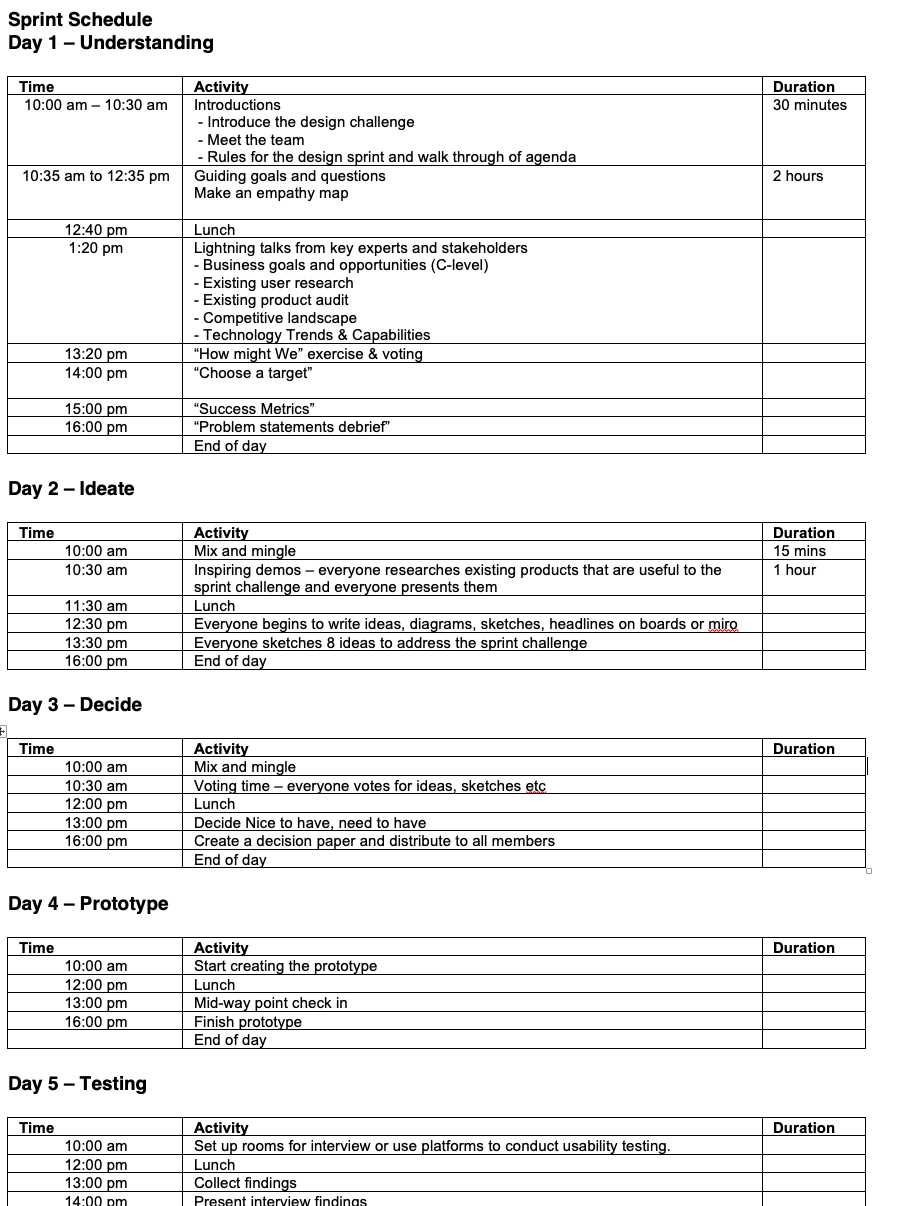Preparing for your Design Sprint
- Sarah Huang
- Aug 20, 2021
- 4 min read
Updated: Sep 19, 2021
Preparing for your Design Sprint? Design sprints are beneficial to both early-stage startups and larger mnc's, although it does take 5-days to turnaround results, you'll find that the design sprint helps teams not only focus uninterruptedly but most importantly install ownership & lower risks going to market for a new feature release. The goal of a design sprint is to take a complex problem(s) and come together with other people on your team, like product managers, engineers, and marketing, and try to solve that problem together.
I remember a time when I was provided an initiative by my boss, they sold me on the idea of a 2-day 'hackathon' for a client project worth $ million dollars.
We had very limited resources in our technical team, as the product owner, I accepted the challenge and found people to be the most challenging aspect of conducting a design sprint, before organizing or leading your first design sprint, make sure that your managers are provided with an outline, outcome and agree to allocate resources.
Ask yourself these questions before a) Has anyone in the past lead a design sprint, or a hackathon? Was this outcome positive How have they structured this before?
b) Do you have the authority and autonomy to run the hackathon or design sprint?
c) Can you get a sign-off on the design sprint team for 5 days?
d) Is it safe and comfortable for you, to escalate an issue or concern of 'non-participation?
Lesson I learned
If not, you'll end up like me in the middle of a team-wide announcement where I was cut-off by my c-level stakeholder and embarrassingly under-minded, I remembered ending up explaining that if we did not open the challenge to ideate with the team, I will be single-handedly doing this alone, from there on out, the team under minded the activity and some members decided to be hands-off, a non-participant, 2 days is simply not enough time for a design sprint or a hackathon for a new feature, etc.
So don't fall into this trap, makes sure you get some good vibes and feelers to the activity both by stakeholders and team members. If you're facing resistance to the activity, ask for sponsorship from a higher-up to champion and provide you the authority to conduct the activity and you are in a safe space to escalate any people-concerns you may have.
Steps in successfully planning your design sprint!
Announce the Design Sprint to your team
I've often started the 'understand/scope' process at the end of my Sprint, giving my team members a few days to digest and go into the Design Sprint.
Write your story
Start off by communicating the challenge in a sentence, roughly draft the challenge can be a feature-focus or epic.
Keep it simple and always put the user central to your design sprint.
'As a user, I want to [x] so that I can [x]'
Ask an Expert to Talk about the business problem
When it comes to the problem statements and the whys and whats, we need to hear it from the experts, so invite an expert at your organization to talk about the business problems. Hear from many if you must but keep your itinerary short and sweet.
Book a room or send an Itinerary
When working remotely with remote teams, it's great to prepare the time slots for participating in your activity. If you're in the office make sure it's comfortable, you have the right amenities, and stockpile post-it notes, whiteboards, and screens.
Establish the rules of the sprint
Figuring out the rules of engagement in advance sets the tone for the sprint, gets everyone on the same page, and helps your team stay focused.
Plan introductions
In some situations, people haven't met when conducting a design sprint, often enough these are cross-functioning teams where members haven't had the opportunity to work with each other, so start with creating an icebreaker activity that puts your members in the hats of the user eg; Tell us a time that you have ever complained about [x]
Post-Sprint Planning
Ask for volunteers to help you take notes of the documentation, the sticky notes, pictures, etc.
Once you have covered these steps, it's time to work on your Sprint Brief & Sprint planning
Example Template for your Design Sprint Brief

Final step: Example Template for your Design Sprint Schedule

Wrap up with a Design Sprint Retrospective
Don't forget to include a retrospective of the design sprint, take notes on what went well and what didn't. Retrospectives are all about empowering, rather than shaming and if something went wrong, it's a great process to improve future sprints or yourself.
Key questions to ask are;
What went well?
What can be improved?
What helped you make your best contribution to the team during this sprint?
What went wrong that caught you off guard?
Which problems came up the most often?
Did an external factor derail your productivity?
What did you discover during the sprint that you’re still wondering about?
How could the current process be holding the team back from creating better solutions?
Don't forget, it matters where you are and who you are working with, and most importantly be flexible in taking home a paycheck at the end of the day, if the design sprint is not something that a company wants to do and you're in a position to execute whatever they say, then proceed always with caution, be mindful that change is slow and steady progress and follow the structure of the organization with small steps and just gather as much input as possible and turn this recruit your allies, program managers are the best ones in corporate settings.
Good luck in finding the happy path!



